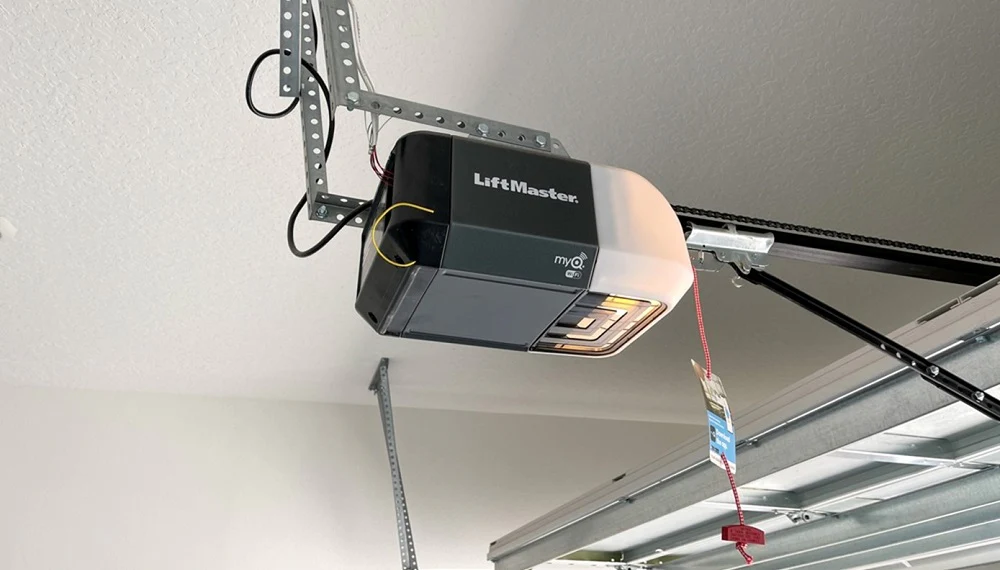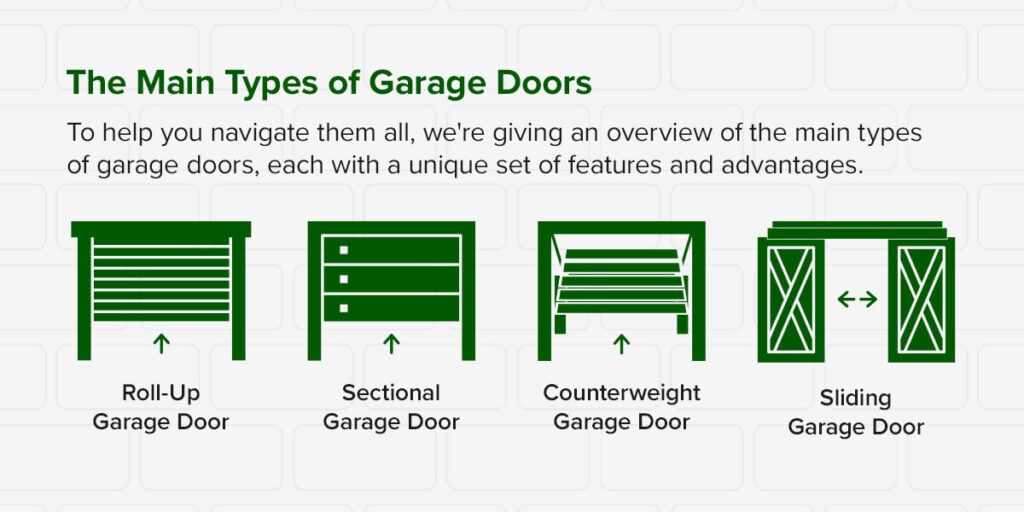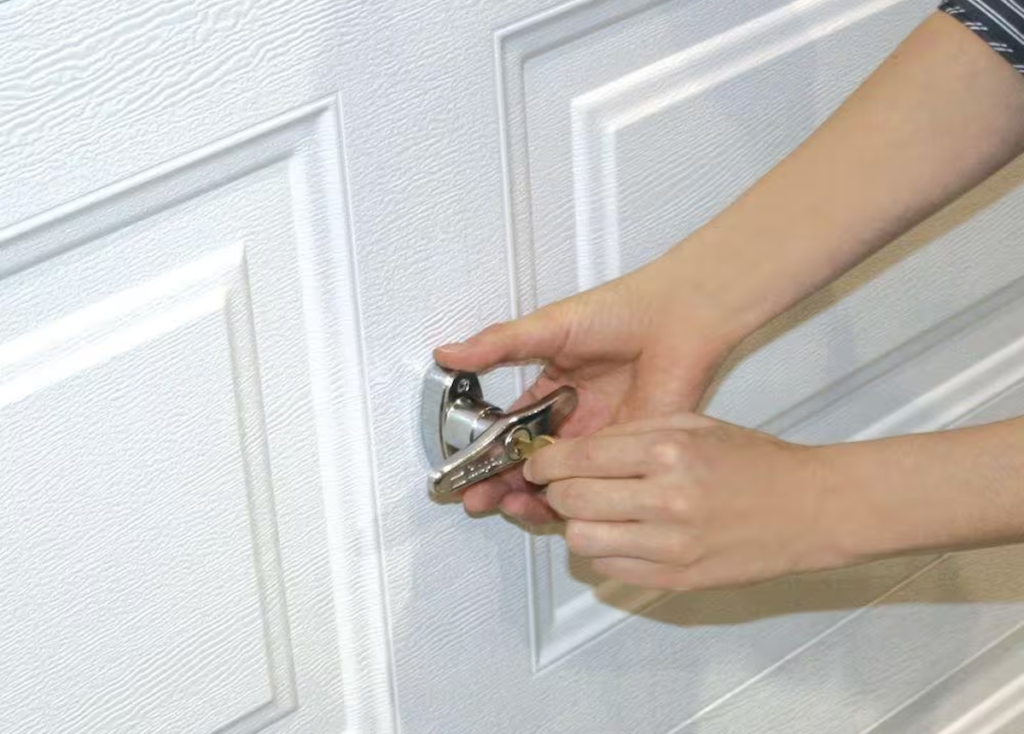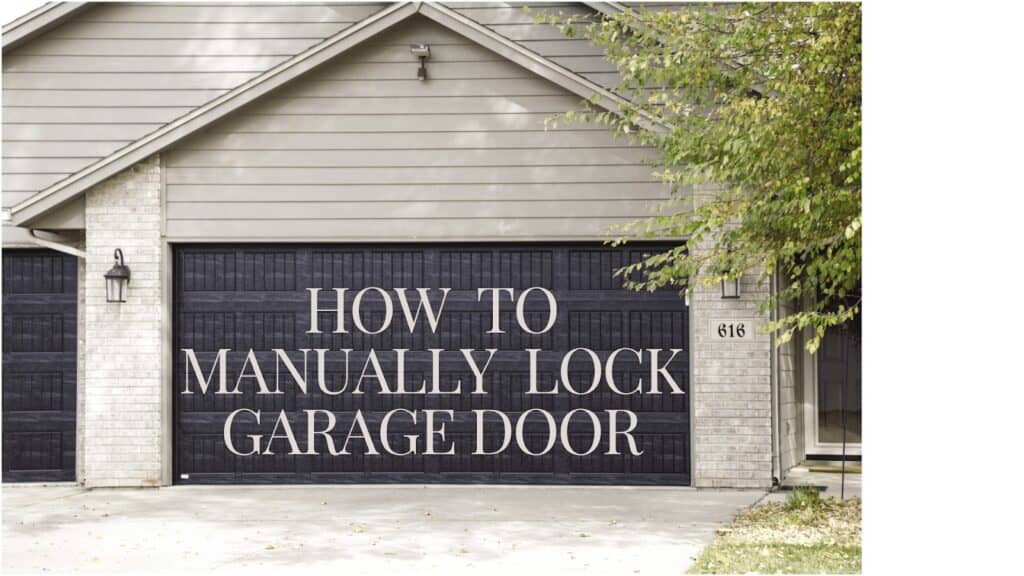Garage door security is crucial for protecting your home and belongings. While automatic garage door openers are convenient, knowing how to lock your garage door manually is an essential skill. Whether you’re dealing with a power outage, a malfunctioning opener, or simply want an extra layer of security, this guide will walk you through the process of manually locking your garage door. 🏠
| Key Takeaways | |
|---|---|
| Types of Locks | Sliding bolt, T-handle, padlocks, and temporary solutions |
| Steps | Identify door type, disengage opener, locate and engage lock |
| Safety | Avoid conflicts with automatic openers, inform household members |
| Maintenance | Regular cleaning and lubrication of manual locks |

Types of Manual Garage Door Locks
Before we dive into the locking process, let’s explore the different types of manual locks available for garage doors:
- Sliding Bolt Locks: Simple and effective, these locks slide into place to secure the door.
- T-handle Locks: Ideal for locking from the outside, these locks require a key to operate.
- Padlocks and Hasps: Versatile and easy to install, these can be used on various garage door types.
- C-clamps or Vise Grips: Temporary solutions for emergency situations.
When I first moved into my home, I was surprised to find that my garage door didn’t have a manual lock. After a power outage left me unable to secure my garage, I quickly learned the importance of having a backup locking method!
Step-by-Step Guide to Manually Locking a Garage Door
Follow these steps to manually lock your garage door:
- Identify Your Garage Door Type:
- Is it a manual roll-up door or a sectional door with an automatic opener?
- Different door types may have different locking mechanisms.
- Disengage the Automatic Opener (if applicable):
- Locate the emergency release handle (usually a red rope hanging from the opener trolley).
- Pull the handle to disconnect the opener from the door.
- Locate the Manual Locking Mechanism:
- For doors with built-in locks, look for a handle or knob on the inside of the door.
- If your door doesn’t have a built-in lock, you may need to install one (we’ll cover this later).
- Engage the Lock:
- For sliding bolt locks: Slide the bolt into the track or receiving hole.
- For T-handle locks: Turn the handle to engage the locking bars.
- For padlocks: Close the hasp and secure it with the padlock.
Remember, safety should always be your top priority. When working with garage doors, it’s essential to wear appropriate safety gear. Check out our guide on the best safety glasses to protect your eyes during DIY projects.
Locking Different Types of Garage Doors

Manual Roll-Up Doors
- Close the door completely.
- Locate the locking bar or handle (usually in the center of the door).
- Turn the handle or slide the locking bar into place.
Sectional Doors with Automatic Openers
- Close the door completely.
- Disengage the automatic opener using the emergency release handle.
- Use the manual lock or install a sliding bolt lock for added security.
Installing Manual Locks (for doors without built-in locks)

If your garage door doesn’t have a built-in lock, you can install one yourself. Here’s a quick guide:
Sliding Bolt Lock Installation
- Choose a location on the inside of the door, near the edge.
- Mark the position for the lock and its receiving hole.
- Drill pilot holes and secure the lock with bolts or screws.
- Test the lock to ensure it slides smoothly and secures the door.
For this installation, you’ll need a reliable drill. Check out our guide on the best cordless drills to find the perfect tool for your DIY projects.
T-handle Lock Installation
- Choose a location on the outside of the door, typically at waist height.
- Use the lock’s template to mark drilling points.
- Drill holes for the lock cylinder and handle.
- Install the lock according to the manufacturer’s instructions.
- Test the lock from both inside and outside the garage.
Remember, when working with power tools, always prioritize safety. Wear appropriate work gloves to protect your hands. Our guide on the best thin gloves for extreme cold can help you find gloves that offer both protection and dexterity. ## Locking Garage Doors from the Outside
Sometimes, you may need to lock your garage door from the outside. Here’s how to do it:
Using T-handle Locks
- Insert the key into the T-handle lock.
- Turn the key clockwise to engage the locking bars.
- Remove the key and ensure the handle doesn’t turn.
Installing Exterior Lock Kits
If your garage door doesn’t have an exterior lock, you can install one:
- Purchase an exterior garage door lock kit.
- Follow the manufacturer’s instructions for installation.
- Typically, this involves drilling holes in the door and frame for the lock mechanism.
- Test the lock from both inside and outside to ensure proper function.
Remember, when drilling into your garage door, precision is key. Using a laser distance meter can help you make accurate measurements for lock placement.
Safety Considerations 🚨
When manually locking your garage door, keep these safety tips in mind:
- Avoid Conflicts with Automatic Openers: Always disengage the automatic opener before using manual locks.
- Inform All Household Members: Make sure everyone knows how to operate the manual locks.
- Regular Maintenance: Keep locks clean and lubricated for smooth operation.
Temporary Locking Solutions
In emergency situations, you can use these temporary locking methods:
Using C-clamps or Vise Grips
- Close the garage door completely.
- Attach a C-clamp or vise grip tightly to the track just above one of the rollers.
- Repeat on the other side of the door for added security.
Inserting a Screwdriver in the Track
- Close the garage door.
- Insert a sturdy screwdriver into a hole in the track just above a roller.
- This prevents the roller from moving up the track, effectively locking the door.
For these temporary solutions, having a quality precision tool set can be invaluable.
Maintenance Tips for Manual Locks
To keep your manual locks functioning properly:
- Clean Regularly: Remove dirt and debris from the lock mechanism.
- Lubricate: Apply a silicone-based lubricant to moving parts every 6 months.
- Check for Wear: Inspect locks for signs of wear or damage and replace as needed.
Conclusion
Knowing how to manually lock your garage door is an essential skill for any homeowner. It provides an extra layer of security and ensures you can protect your property even during power outages or opener malfunctions. By following this guide, you can confidently secure your garage door in any situation.
Remember, while DIY solutions are great, sometimes professional help is necessary. If you’re in the Tucson area and need expert assistance, consider reaching out to Bill Welter Garage Door Repair for professional garage door services.
FAQs
- How do I lock a garage door without power?
Disengage the automatic opener and use the manual locking mechanism or a temporary solution like a C-clamp. - Can you lock a garage door from the outside?
Yes, using a T-handle lock or by installing an exterior lock kit. - How do I switch back to automatic locking?
Re-engage the automatic opener by pulling the emergency release handle towards the opener to reconnect the trolley. - What if my garage door doesn’t have a built-in lock?
You can install a sliding bolt lock or T-handle lock yourself, or hire a professional to do it for you. - Is it safe to use a padlock on my garage door?
While padlocks can provide temporary security, they’re not ideal for long-term use as they can potentially damage the door or track.
By mastering these manual locking techniques, you’re taking a significant step in securing your home. Remember, a well-maintained garage door is key to both security and convenience. If you’re interested in other home improvement projects, check out our guide on how to wire a 3-way light switch for more DIY tips. Stay safe and secure! 🏡🔐







